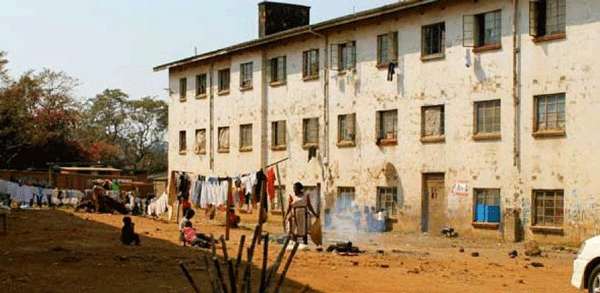
BY GARY GERALD MTOMBENI “AT one point I even thought of going back home to stay with my parents because I could no longer afford city life,” said Thabeth Mlilo recalling her predicament at the height of the COVID-19 pandemic in 2020.
As the COVID-19 tight lockdowns condemned her indoors in Harare’s low-density suburb of Malbereign, she could not even afford a loaf of bread to feed her two children.
Her husband, a mechanic, was equally distraught after business ground to halt because of the lockdowns.
Mlilo, a former supermarket till operator, found herself literally caught between a rock and a hard place and yearning for her father in Zvishavane, but going there was as tough as making ends meet from nothing, given the myriad of police roadblocks where exemption letters were required for one’s passage.
The untenable situation wrought by COVID-19 saw many banished to rural areas for good.
The Zimbabwe National Statistics Agency (ZimStat) 2022 population and housing census preliminary report indicates a 61,4% increase in the number of people who migrated to rural areas and a 38,6% rise in those making their way into urban areas.
Unemployment has been singled out as a major driver of poverty in Zimbabwe’s urban areas. Two years of COVID-19 lockdowns piled misery on Zimbabwean urbanites who were already struggling to make ends meet in an economy on a relentless free-fall due to failed economic policies rendered useless by rampant corruption and misappropriation of national resources.
“Unemployment has affected me physically, emotionally and mentally,” said Mlilo. “One feels like they are worthless, not doing anything progressive, drains you as a parent, as a wife and as a mother, it’s just painful.”
- Chamisa under fire over US$120K donation
- Mavhunga puts DeMbare into Chibuku quarterfinals
- Pension funds bet on Cabora Bassa oilfields
- Councils defy govt fire tender directive
Keep Reading
In the capital Harare, unemployment rate increased by four percentage points to 20,4% in 2022, according to ZimStat.
Zimbabwe’s untenable economic situation is not only taxing the unemployed, the employed are equally singing the blues and feeling the pinch of a tough urban existence.
One civil servant — who pleaded to remain anonymous to preserve the little dignity left after enduring years trying to survive on his largely worthless government pay, said inflation had greatly affected his life. His salary has completely failed to track inflation which has driven prices of basic goods beyond the reach of many Zimbabweans.
The inflation monster has wreaked havoc on currency and proved the heavily weakened Zimbabwe dollar virtually useless against major and stronger foreign currencies such as the United States dollar.
“I and my wife try to save money to buy property, the time we get to the buying stage you find that the (inflation) rate would have gone up, and the money will no longer be enough to purchase the property. Our salaries are in local currency; it would have been better if we earned in foreign currency,” he mused, a proposition that his employer has continued to scoff at.
ZimStat says 314 304 jobs were lost during the fourth quarter of last year after the country experienced high inflation levels, leaving employers with no choice, but to downsize.
Since then inflation has shot through the roof to 256,7% in July from 50% in August last year.
Inflation in Zimbabwe has been a bone-chilling roller coaster ride ever since the country set a global all-time record of 500 billion percent in 2008.
In the hope of making life a little bearable for some impoverished Zimbabwean urbanites non-governmental organisations have shifted focus from rural areas to towns and cities.
Recently the World Food Programme (WFP) came to the rescue of food insecure urban dwellers through its hydroponics initiative, greenhouse vegetable production system.
This initiative is financially supported by the United States Agency for International Development and the Swiss Agency for Co-operation and Development.
One of the beneficiaries from Alaska High School in Chinhoyi, about 100km from Harare, Hazvinei Tembo (30) said: “The greenhouse is helping us to have access to healthy food. The vegetables we harvest from this greenhouse generate about US$216 per table. This keeps us going, we now have something to do.”
Now she can afford school fees and uniforms for her three children who had dropped out of school at the height of the COVID-19 pandemic.
WFP says more than half of Zimbabwe’s urban households are facing difficulties in accessing nutritionally adequate diets.
- Follow Gary on Twitter@MthombeniGerald










